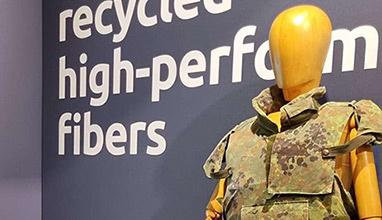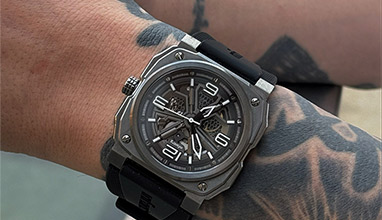Trends in Sustainable Uniform Design: Dressing for Impact
Let's step forward in the realm of design, where sustainability blends with aesthetics to form something unique and environmentally friendly. At this captivating crossroad, you encounter sustainable uniform design. Here, functionality integrates seamlessly with environmentally conscious practices, paving the way towards making a significant impact on our planet.

The growing concern surrounding climate change propels industries to introspect their carbon footprint critically. Specifically, the textile industry finds itself at the forefront of these initiatives. Consequently, they are reimagining ways to incorporate sustainability into daily production and consumption patterns without compromising efficiency or quality.
Inherent Problems with Traditional Uniforms
When we delve deep into the fabric of our society, it becomes apparent how much our conventional methods have been adding to various problems. Traditional uniforms, produced using synthetic materials and harsh chemical dyes, contribute markedly to environmental degradation and water pollution. Simultaneously, these can pose health risks to wearers due to possible toxin exposure.
Beyond just environmental concerns, there are also severe social implications. Inexpensive labor in underprivileged countries is often exploited for mass production processes, shedding a light on the vast ethical gaps prevalent within the industry. This magnifies the need for social sustainability and ethical practices in the global fashion supply chain.
Conceptualizing Sustainability in Fashion
Before moving on, it's important for you to understand what sustainability in fashion entails. It includes environmentally friendly business practices like using organic materials and minimizing waste production. Further, it also covers ethical labor practices ensuring fair wages and decent working conditions.
Materials Selection: From Plastic to Organic
Designing sustainably begins from selecting materials that are eco-friendly as compared with synthetic fibers or plastic derivatives found in conventional uniforms. Choosing organic fibers like cotton or bamboo not just reduces the carbon footprint but also enhances wearer comfort by being soft against skin.
Eco-friendly Clothing Manufacturing Techniques
Transitioning from traditional methods towards eco-friendly clothing requires some significant changes in manufacturing techniques. Technologies exist that use less water and energy when compared with traditional manufacturing processes. These aim at lowering energy consumption that's associated with machinery operation and reducing water usage required for cloth dyeing.
Personalizing Sustainable Uniforms with Technology
The way forward involves upgrading your custom work uniforms that combine sustainability with personalization brought on by digital technology. New tech allows for customization of sustainable uniforms - infusing a personal touch while reducing waste simultaneously.
Innovations in Energy-Efficient Production
Stepping up the game are innovations designed to bring energy efficiency into textile production. Solar-powered factories are proving significant in reducing carbon dioxide emissions associated with electricity generation for textile operations.
Water Conservation in Sustainable Apparel
Water, a precious and vital resource though often used recklessly during clothing production, finds an important role in sustainable apparel creation. Water-saving technologies are now an integral part of eco-friendly manufacturing practices aiming at decreasing the water footprint of producing a piece of clothing.
Waste Reduction Strategies for Uniform Design
Responsible designing aligns with waste reduction strategies. These have captured attention worldwide from environmentally-conscious businesses. Techniques like utilizing last-piece pattern cutting or remaking post-manufacturing scraps aid in minimizing uniform production waste.
Social Impact of Sustainable Uniforms
Companies embracing sustainable uniform design cause beneficial social ripples across sectors. Fair labor practices within sustainability improve the livelihood of garment-producing workers. It effectively removes historically prevalent exploitative practices in the fashion industry.
Future Predictions in Sustainable Uniform Design
A greener future lies ahead as corporations recognize the value of environmental friendliness. Industry experts envisage wider acceptance of circular fashion models. Companies focusing on recycling old uniforms or using recycled fabrics, instead of manufacturing new ones from raw materials, would curtail extreme waste generation. For example, skechers scrubs are made with soft, stretchy, fabric that comes in a variety of gorgeous colors and prints and each eco-friendly scrub set is made with 12 recycled plastic bottles.
Challenges Faced by Sustainable Uniform Industry
Despite progress, transition to a sustainable uniform industry hasn't been flawless. Challenges such as high costs associated with organic fabrics and lack of industrial-scale green manufacturing facilities inhibit growth.
Role of Consumers in Sustainable Practices
Even as companies do their part, it's crucial for individual consumers to play a role too. Demand for sustainable custom work uniforms can drive more brands towards adopting eco-friendly practices. This consumer-driven accountability propels change, emboldening industries to lean more firmly into ethical fashion.
Government Policies Backing Sustainability
Their role cannot be overstated either. Government policies and regulations incentivizing the shift towards peaceful coexistence with our ecosystem can efficiently fast-track the move towards sustainable uniform design - making positive strides not just an ethical choice but a legal necessity.
Sustainable uniform design isn't merely a trend but soon will become norm as it makes massive strides towards environment preservation while creating social impact too. While challenges exist that suffice to state that advantages overshadow limitations it brings path designers next wave revolution stirring unprecedented change towards a better sustainable future.
Hits: 8829 | Leave a comment
Tags:uniforms, sustainable fashion






















